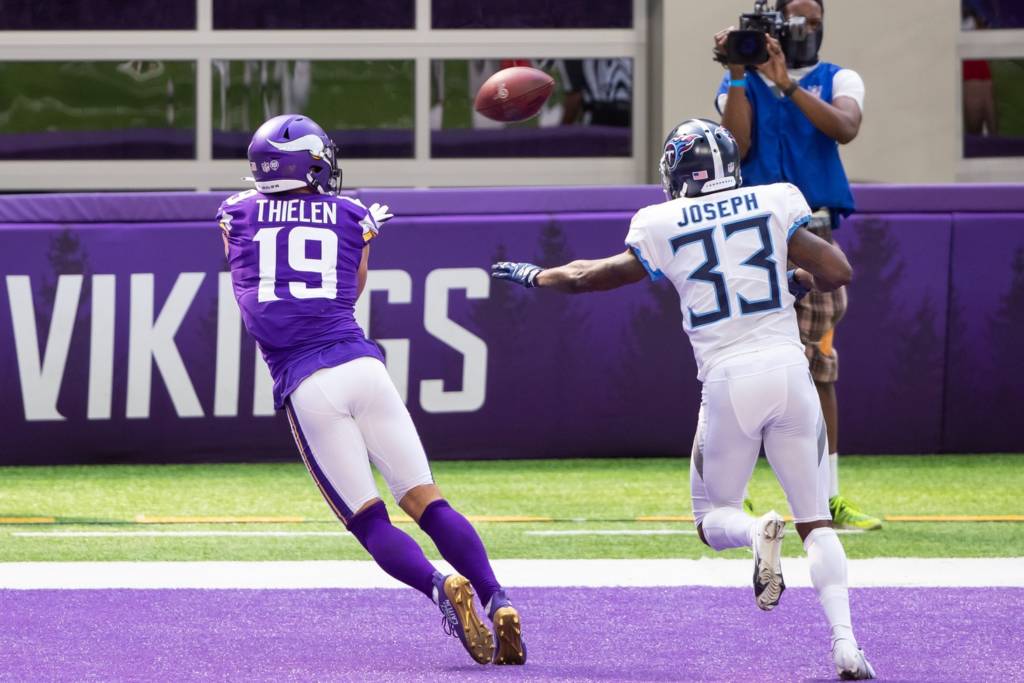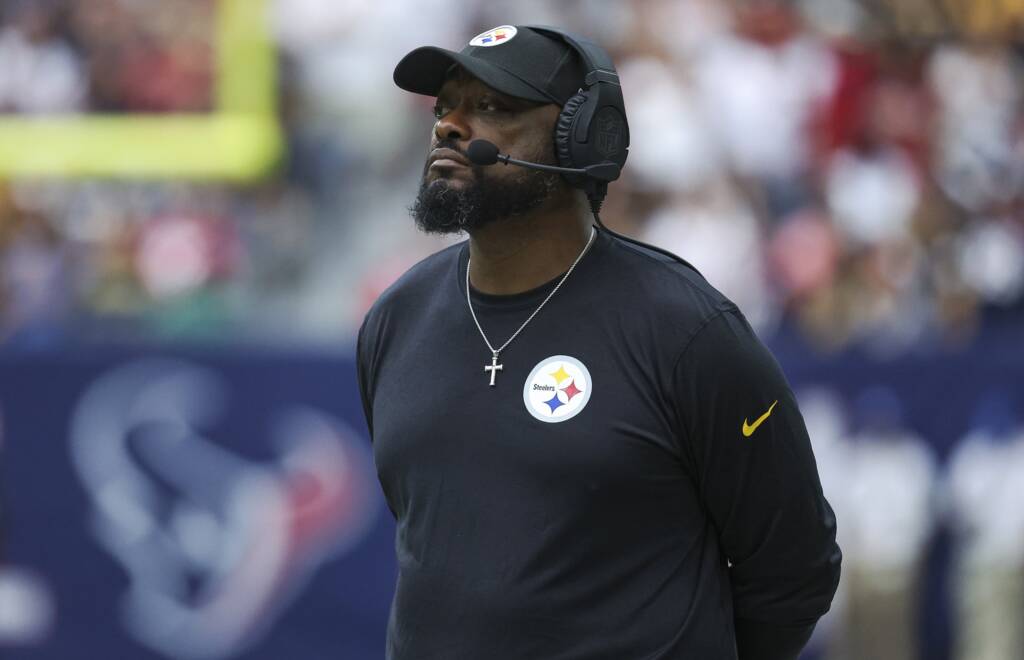It looks like the Vikings will survive the glancing blow from COVID-19 and play their game against the Texans this week. Though they had to evacuate and stay away from their facility for a few days, it’s hardly their only – or even their most glaring — issue as they head into Week 4.
For starters, they could really use a win.
All excuses aside, this has already been one of the worst beginnings to a season in the 60-year history of the franchise. This is the sixth Vikings team to ever begin a season 0-3. The others were in 1962, 1967, 2002, 2011 and 2013. Only four Vikings teams have started 0-4: 1962, 1967, 2002, 2011. The 1966 team started 0-3-1.
The 1962 season was only the second in team history. The 1967 season was the first under head coach Bud Grant. The 2002 and 2011 campaigns were the first full seasons of the Mike Tice and Leslie Frazier regimes. That’s not the company this team wants to keep. Nobody needs or wants this win more than Mike Zimmer and his players.
Here’s the thing, though: The Texans are also 0-3 – albeit after running the gauntlet of the Chiefs, Ravens and Steelers — and are in equally desperate need of a win. Neither team is going to catch the other team coasting or resting on their laurels. Any laurels that existed are a faint memory at this point. Remember, both of these teams went 10-6 and lost in the Divisional Round of the playoffs a season ago.
As the great Michael Scott once uttered, “Well, well, well, how the turntables.”
Indeed, success in the NFL can be fleeting… unless you’re the Patriots. Then again, some might call their success cheating rather than fleeting, but I digress.
Let’s have a look at this week’s collision of 0-3 teams.
THE BIG MATCHUPS
It seems one of the biggest matchups in literally any Vikings game is the one between their shaky offensive line and the opponents’ defensive line. To that end, if you aren’t reading the offensive line breakdowns being churned out by John Tuvey each week, you’re missing out. Be sure to check out this week’s preview of the challenge in containing J.J. Watt and Carlos Watkins of the Texans. And then come back for his film review next week. It’s always good stuff.
The matchup challenges go both ways, though, and the Vikings suddenly pose a new challenge to opposing defenses in the form of Justin Jefferson. It has been suggested in this space repeatedly that Minnesota’s passing game might suffer due to double-coverage being applied to Adam Thielen until such time that a second viable receiving threat was developed to fill the void left by Stefon Diggs.
That threat arrived in Week 3 in the form of Jefferson, who announced himself to the NFL with sure hands, good YAC and a heaping portion of Griddy.
Might the Texans be up for the challenge of the new Thielen-Jefferson combo? At first glance, you’ll note that Houston is allowing the third-fewest passing yards per game in the NFL thus far (199.3) behind only the 49ers and Colts. No wide receiver has a 100-yard game against them so far.
Dig deeper, though, and you’ll also notice that quarterbacks have a 112.2 passer rating against the Texans, with six touchdowns and no interceptions. Only three defenses have allowed a higher passer rating — the Packers, Cowboys and Jaguars. Moreover, Houston ranks 25th in coverage with a grade of 48.4, according to Pro Football Focus. For context, the Vikings are 20th at 52.5. In short, the Texans pass defense is an area the Vikings need to exploit.
TEXANS PLAYER TO WATCH
As mentioned above, the Vikings haven’t exactly been a brick wall in terms of pass defense this season either. And in this winless matchup of resistible forces and movable objects, the Texans should be able to take advantage as well.
Everyone knows Deshaun Watson is one of the most dangerous quarterbacks in a league full of them. However, his best weapon of the past several seasons, DeAndre Hopkins, is catching passes for the Cardinals now. There are few receivers on the planet capable of filling such a void – and certainly, none of them are on the Texans’ roster – thus, they are endeavoring to so via a committee. Four Titans players have at least 10 receptions. Familiar face Randall Cobb, who spent eight seasons in Green Bay and one in Dallas prior to coming to Houston this season, leads the team with 177 receiving yards. Big tight end Jordan Akins has reeled in 11 of his 12 targets, including one for a touchdown. The well-traveled Brandin Cooks leads the team with 18 targets.
The most dangerous weapon left in Watson’s quiver, however, is the speedy Will Fuller V. He’s what you would call an X-factor in this – actually in most – matchups due to his big-play ability. It’s true that Fuller has roughly a 1-to-1 ratio of highlight-reel plays to injuries in his four-plus seasons since the Texans selected him with the 21st pick of the 2016 NFL Draft (one spot ahead of where the Vikings selected Jefferson four years later). However, he’s healthy as of five minutes ago and is a significant vertical threat that the depleted Vikings defense will need to account for on every snap.
KEY STATS
Earlier this week, I shared the several ways in which time has been an enemy of this season’s Vikings team. One of the areas in which it hasn’t been on their side is the amount of time Kirk Cousins has been afforded to throw. The pressure he’s been under has been easy to observe, is backed up by poor pass-blocking grades amongst his linemen on PFF and exploits Cousins’ well-known pocket-awareness shortcomings.
This led me to contemplate what the Vikings might be able to do in order to offset or somehow obscure this weakness. What would I do if I were in Coach Zimmer or OC Gary Kubiak’s shoes to make this less of an issue?
Then I noticed this post on the Twitter machine from the PFF folks:
Cousins leads the NFL in highest average depth of target. That’s not necessarily a bad thing, of course. And when it works, it’s great… as we’ve seen with Thielen and Jefferson and in the past with Diggs. His 19 deep target attempts (more than 20 yards downfield) are the second-most in the NFL this season behind only Aaron Rodgers’ 24. By contrast, Drew Brees has three and Jared Goff has five.
Granted, Zimmer and Kubiak have both forgotten more about football in the time it’s taken you to read this article than I’ll ever know. But to this amateur’s sense of football logic, wouldn’t it make sense to maybe mix in shorter, quick-hitting pass plays? Such plays don’t require linemen to hold their blocks as long because they don’t take as long to develop. That would seem to be a good thing for this offense. And it’s not like Dalvin Cook and Alexander Mattison are incapable of catching passes out of the backfield and making plays. In fact, both are quite good at doing so.
By no means is this a call for the Vikings to completely abandon throwing downfield to their top two wideout targets. And perhaps the numbers early on are a bit skewed by Minnesota needing to play from behind the first two weeks of the season, necessitating deeper throws in an effort to pick up larger chunk plays.
One has to wonder, though, if more quick-hitting pass plays might be in the offing. It’s something that bears watching in the game against the Texans and in the weeks ahead.

